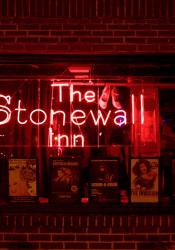Greenwich Village, New York City
Greenwich Village has always been a center for expression, and an oasis for art, music, and culture. It was once considered the "Bohemian Capital" due to its citizens who practiced "unconventional" lifestyles in the 19th century. It is home to the 1960's counterculture movement and the birthplace of the Gay Rights Movement. Many protests occurred here, inclusing the protest against the Vietnam War. During the 1960's, several abstract expressionists resided here including Andy Warhol, and singer Lou Reed.
Greenwich Village is a historical hub for gay life and is arguably considered one of the "gayest" neighborhoods of New York City. During the mid 20th century (and before), members of the LGBTQ+ community had very few places where they could be their true selves, often keeping their gender and sexual identities hidden. There were some refuges, like the Stonewall Inn inside of Greenwich Village, where members of the LGBTQ+ community could be themselves and not have to be afraid of being arrested, or worse.
Works Cited
“A History of Greenwich Village.” StuyTown, https://www.stuytown.com/guides/greenwich-village.
Miller, Matt. “New York's Greenwich Village in the '60s: The Photos.” Esquire, Esquire, 21 Aug. 2020, https://www.esquire.com/entertainment/g14473188/new-york-greenwich-villa....
Parent Map
Coordinates
Longitude: -74.002741800000

